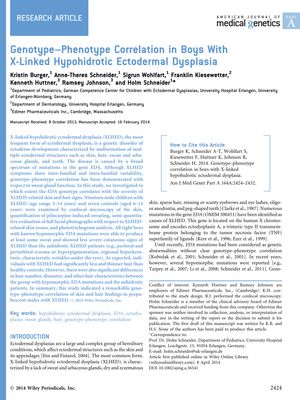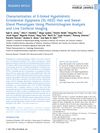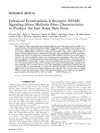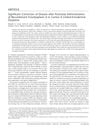Genotype-Phenotype Correlation in Boys with X-Linked Hypohidrotic Ectodermal Dysplasia
April 2014
in “
American Journal of Medical Genetics
”

TLDR Boys with less severe EDA mutations in XLHED have milder symptoms and better sweat and hair production.
In the 2014 study, researchers examined the relationship between the EDA genotype and the severity of skin and hair symptoms in 19 boys with X-linked hypohidrotic ectodermal dysplasia (XLHED) aged 3-14 years, compared to 7 healthy controls aged 6-14 years. The study utilized confocal microscopy, pilocarpine-induced sweating tests, facial photograph evaluation, and phototrichogram analysis to assess the condition. The findings indicated that boys with hypomorphic EDA mutations, which allow for some residual ectodysplasin A protein function, had milder symptoms, could produce some sweat, and had more and thicker hair than those with anhidrotic (no sweat) mutations. The study concluded that there is a significant genotype-phenotype correlation in XLHED, with the type of EDA mutation influencing the severity of skin and hair symptoms. The presence of sweat glands was not always indicative of the ability to sweat, and hair characteristics varied with the severity of the mutation. Mapping EDA mutations and clinical data can help predict the severity of XLHED and the potential efficacy of future therapies.




